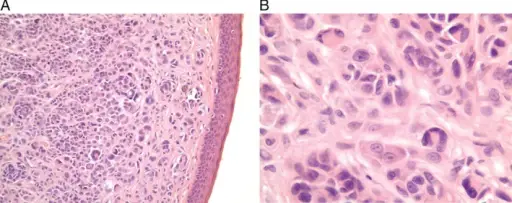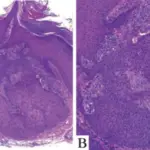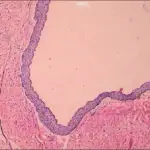Familial melanoma syndrome is a group of skin diseases that have a common genetic origin.
What is the Pathology of Familial Melanoma Syndrome?
The pathology of familial melanoma syndrome is:
-Etiology: The cause of familial melanoma syndrome is CDKN2A and CD4K germline mutations.
-Genes involved: CDKN2A and CD4K.
-Pathogenesis: The sequence of events that lead to familial melanoma syndrome is poorly understood believed to be a result of CDKN2A and CD4K germline mutations.
-Morphology: The morphology associated with familial melanoma syndrome shows asymmetric, raised, color variegation present, of variable sizes.
-Histology: The histology associated with familial melanoma syndrome show lentiginous melanocytic hyperplasia with spindle or epithelioid melanocytes.
How does Familial Melanoma Syndrome Present?
Patients with familial melanoma syndrome typically difficult to estimate the gender prevalence present at an age range of 15 to 25 years. The symptoms, features, and clinical findings associated with familial melanoma syndrome include the presence of several primary melanomas, the inclination to develop superficial dispersion melanomas with absence sunburns, and a low amount of acral and nodular melanomas.
How is Familial Melanoma Syndrome Diagnosed?
Familial melanoma syndrome is diagnosed through the clinical familial history, dermoscopic studies. CT, MRI, and endoscopic ultrasound.
How is Familial Melanoma Syndrome Treated?
Familial melanoma syndrome is treated through surgical interventions, chemotherapy, and lifetime follow-up.
What is the Prognosis of Familial Melanoma Syndrome?
The prognosis of familial melanoma syndrome is poor as it associated with other ailments and high relapse.



